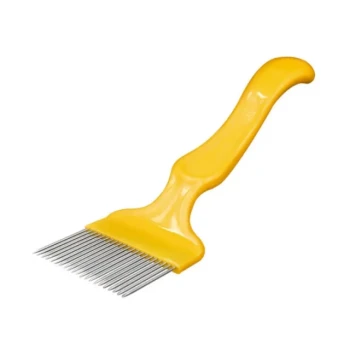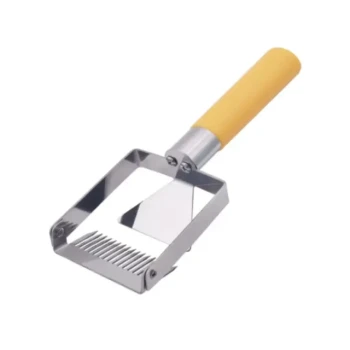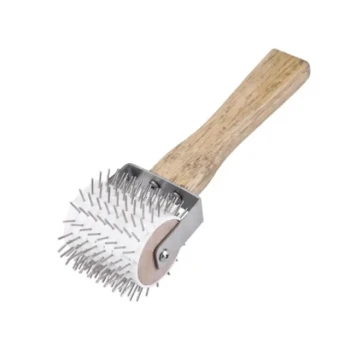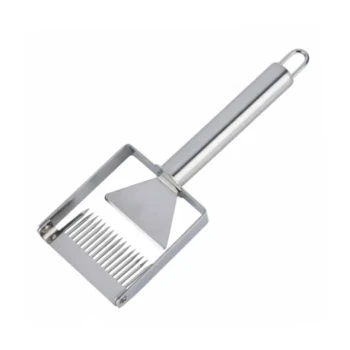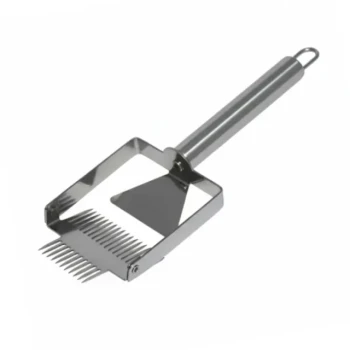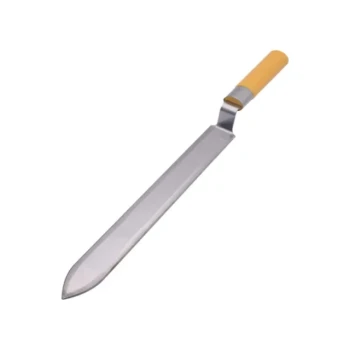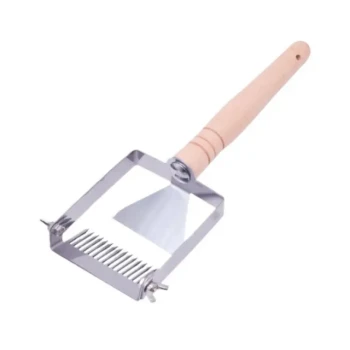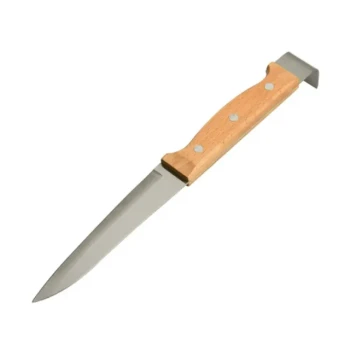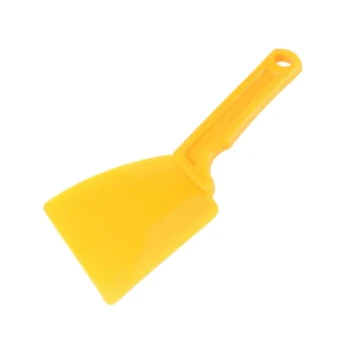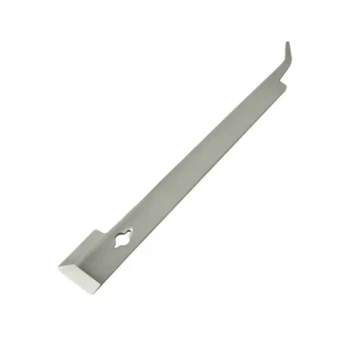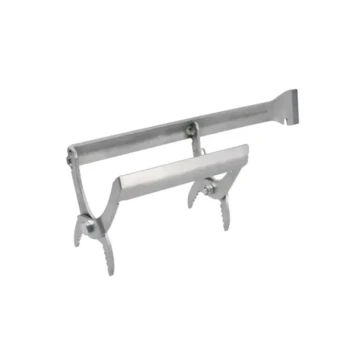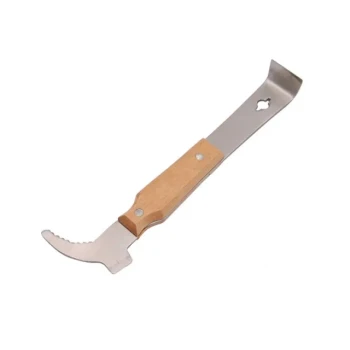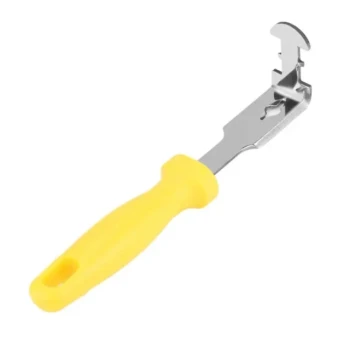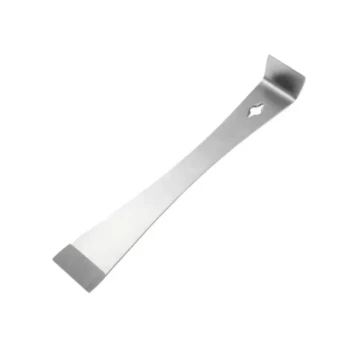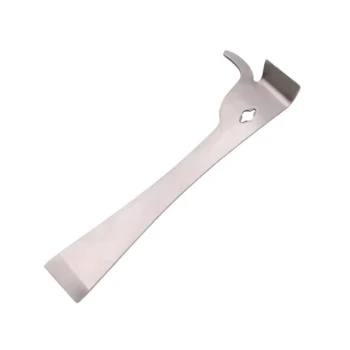In short, an uncapping fork is a simple, handheld beekeeping tool used to remove the wax cappings from a frame of honeycomb. Comprised of sharp metal tines attached to a handle, its primary function is to expose the honey-filled cells, preparing the frame for honey extraction. It is a fundamental tool for beekeepers of all levels.
The uncapping fork is not just a tool; it's a solution for precision. While alternatives exist for speed, the fork provides unparalleled control, making it indispensable for handling uneven comb and minimizing waste.
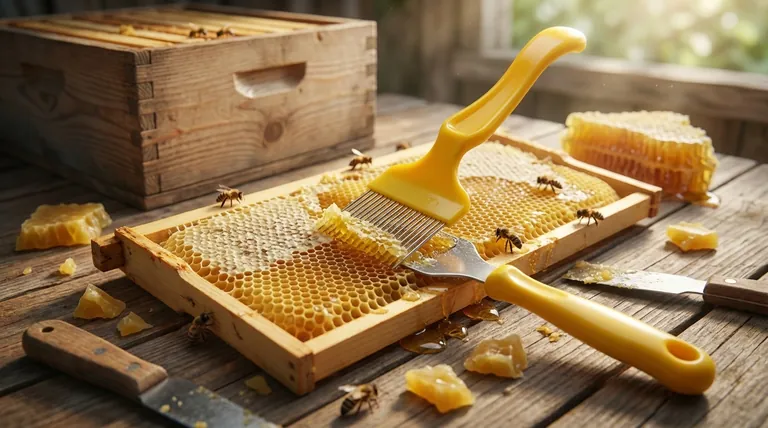
The Core Function: Preparing for Honey Extraction
To understand the uncapping fork, you must first understand how bees store honey. They place it in hexagonal wax cells and, once the honey is at the correct moisture level, they seal the cell with a fresh layer of beeswax, known as a "capping."
Why Cappings Must Be Removed
These wax cappings create an airtight seal that preserves the honey indefinitely. Before a beekeeper can spin the honey out of the frames using a centrifugal extractor, these protective seals must be broken or removed.
How the Fork Works
The uncapping fork operates with a simple, manual action. The beekeeper slides the sharp tines just beneath the surface of the wax cappings and lifts upwards. This prying motion "picks" or "scratches" the cappings off the cells, opening them for extraction.
The Advantage of Precision
Unlike a knife that slices across the entire frame, a fork offers cell-by-cell control. This makes it less intrusive and highly effective for frames that are not perfectly flat. It allows the beekeeper to access low spots or uneven corners that a knife might miss.
Beyond Extraction: Other Critical Uses
While its main job is preparing for harvest, the uncapping fork serves other important functions in hive management.
Checking for Pests and Disease
Beekeepers use the fork for biosecurity checks. By selectively uncapping a few drone brood cells, they can inspect for pests like the Varroa mite, a significant threat to honeybee colonies.
Encouraging Honey Relocation
A beekeeper might want bees to move honey from one part of the hive to another, perhaps to make room for the queen to lay eggs. By lightly scratching the cappings with a fork, the beekeeper signals the bees to unseal the honey and move it elsewhere.
Understanding the Trade-offs
Choosing an uncapping fork over other tools, like an uncapping knife, involves a clear set of trade-offs between speed and control.
The Benefit: Cost and Control
The fork is a non-electric, budget-friendly tool. Its greatest strength is the precise control it offers, which helps preserve the underlying comb structure and prevents unnecessary honey waste.
The Drawback: Time and Effort
The primary disadvantage of a fork is that it is more labor-intensive and slower than an uncapping knife. For beekeepers with a large number of hives, processing every frame with only a fork can be a time-consuming task.
When a Fork is Superior
The fork truly excels where other tools fail. It is the perfect instrument for uncapping the low areas or divots in a frame of honey that a knife would simply glide over. For this reason, many large-scale beekeepers use a knife for the bulk of the work and a fork for cleanup.
Making the Right Choice for Your Apiary
Your beekeeping goals will determine how you utilize this essential tool.
- If your primary focus is a small-scale or hobby apiary: An uncapping fork is an excellent, cost-effective choice as your primary uncapping tool.
- If your primary focus is large-scale honey production: The fork serves as a crucial secondary tool for detailed cleanup work on frames primarily processed with a faster uncapping knife.
- If your primary focus is diligent hive health and biosecurity: This tool is non-negotiable for performing targeted inspections of brood cells.
Ultimately, the uncapping fork is a versatile and fundamental piece of equipment that belongs in every beekeeper's toolbox.
Summary Table:
| Aspect | Description |
|---|---|
| Primary Function | Removes wax cappings from honeycomb to prepare for extraction. |
| Key Advantage | Offers precise, cell-by-cell control, ideal for uneven comb. |
| Best For | Small-scale apiaries, detailed cleanup, and hive health inspections. |
| Trade-off | More labor-intensive and slower than an uncapping knife. |
Ready to equip your apiary with precision tools?
HONESTBEE is your trusted wholesale partner for commercial apiaries and beekeeping equipment distributors. We supply durable, professional-grade uncapping forks and a full range of beekeeping supplies designed to maximize your efficiency and honey yield.
Contact our expert team today to discuss your wholesale needs and discover how our equipment can support your beekeeping success.
Visual Guide
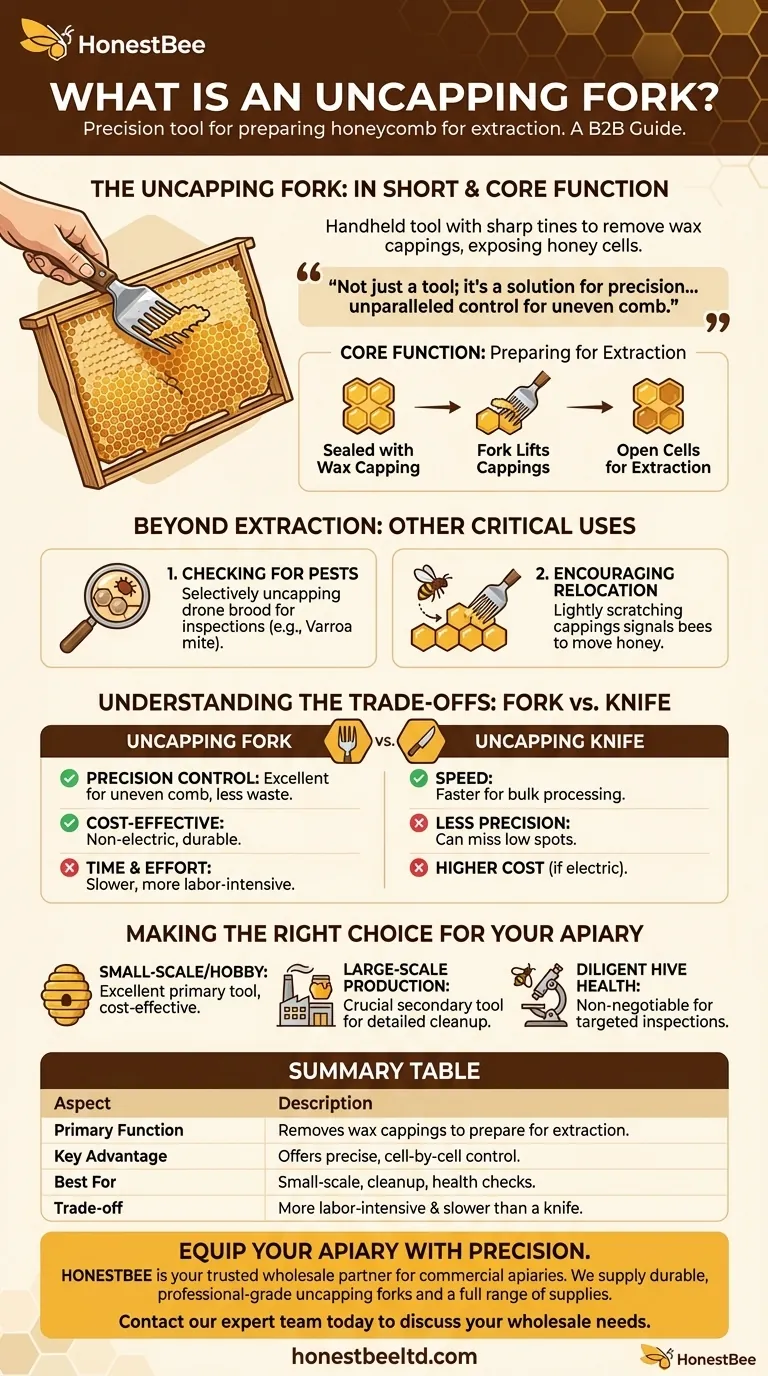
Related Products
- Professional Honey Uncapping Fork Tool with Customizable Tine Options
- Stainless Steel Pivoting Honey Uncapping Fork with Plastic Handle
- Professional Honey Uncapping Roller for Efficient Harvesting
- All-Stainless Steel Pivoting Honey Uncapping Fork for Beekeeping
- All Stainless Steel Double Sided Pivoting Honey Uncapping Fork
People Also Ask
- What to use to uncap honey? Choose the Right Tool for Your Apiary
- What is the recommended practice when using plain knives for uncapping? Master the Two-Knife Method for a Perfect Harvest
- What is the best method for uncapping honey? A Guide to Speed vs. Comb Preservation
- What is the use of an uncapping fork? A Precision Tool for Hive Management and Honey Harvesting
- What is the first step in the honey extraction process? Master the Critical Art of Uncapping
